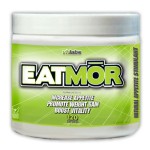Categories
Embargoed news from Annals of Internal Medicine — ACIP 2014 Adult … – Science Codex
1a. ACIP Releases 2014 Adult Immunization Schedule
The Center for Disease Control and Prevention’s Advisory Committee on Immunization Practices (ACIP) announced its recommended 2014 adult immunization schedule. The ACIP is comprised of the American College of Physicians and 16 other medical societies representing various medical practice areas. Each year, the ACIP reviews the CDC’s Recommended Adult Immunization Schedule to ensure the schedule reflects current clinical recommendations for licensed vaccines. The recommendations are intended to guide physicians and other clinicians about the appropriate vaccines for their adult patients.
Key changes and updates for 2014:
- Influenza: Information on the use of the recombinant influenza (RIV) and inactivated influenza (IIV) vaccines among egg-allergic patients was added to the footnote and indicates that RIV or IIV can be used among persons with hives-only allergy to eggs, as it contains no egg protein.
- Td/Tdap: The tetanus, diphtheria, accellular pertussis (Tdap) and tetanus, diphtheria (Td) vaccines footnote was edited to harmonize with the language used in the pediatric immunization schedule. A single dose of Tdap vaccine is recommended for previously unvaccinated persons aged 11 years or older, and Td booster should be administered every 10 years thereafter.
- HPV: Information was added to the humanpapillomavirus (HPV) vaccine footnote to clarify the timing between the second and third doses and to harmonize language between the pediatric and adult immunization schedules. No changes in recommendations were made.
- Zoster: Being a health care worker is no longer an indication for vaccination. This change was also made to the HPV vaccine footnote.
- PCV13: Because PCV13 is recommended to be administered before PPSV23 among persons for whom both vaccines are recommended. The PCV13 footnote now precedes the PPSV23 footnote and includes wording to remind providers of the appropriate order of these vaccines when both are indicated.
- The meningococcal vaccine footnote was edited to clarify which persons need either one or two doses of vaccine and to provide greater clarity regarding which patients should receive meningococcal conjugate (MeanACWY-D) versus the meningococcal polysaccharide (MenACWY-CRM).
- Hib: The Haemophilus influenza type b (Hib) vaccine recommendations were updated. The vaccine is recommended for certain adults at increased risk for Hib who have not received the vaccine before, except for those with HIV because their risk for Hib infection is low. Adults who have had successful hematopoietic stem cell transplant are recommended to receive a three-dose series of Hib vaccine 6 to 12 months after the transplant regardless of prior Hib vaccination status.
The complete Schedule is being simultaneously published in Annals of Internal Medicine and on the Centers for Disease Control and Prevention (CDC) web site at http://www.cdc.gov/vaccines. Additional guidance for the use of the vaccines and updates can be found at http://www.cdc.gov/vaccines/hcp/acip-recs/index.htm.
1b. Physician survey identifies barriers to effective adult vaccination delivery
A survey of more than 700 general internists and family physicians shows that many barriers exist to achieving recommended adult vaccination delivery. The results are being published in Annals of Internal Medicine. Vaccination rates in adults are low and more than 95 percent of the 30,000 Americans who die of vaccine-preventable disease each year are adults. Researchers designed a mail and internet-based survey to find out the following: physician practices for assessing vaccination status in their patients and stocking recommended vaccines; barriers to vaccination; characteristics of practices reporting financial barriers to delivering vaccines; and practices regarding vaccination by alternate vaccinators. Ninety-seven percent of physicians reported assessing their patients’ vaccination status at annual visits, but only about 30 percent did so at every visit. Cost was the biggest barrier to stocking needed vaccines and most physicians said they referred patients to an alternate vaccinator, such as a retail pharmacy or clinic, for vaccines they did not stock. Financial barriers were more likely to be a problem for small practices (fewer than five providers), being in the Southern region, and having a higher proportion of patients with Medicare Part D (for general internists only). Physicians reported getting vaccination information on their patients from several different sources and communication between physicians and alternate vaccinators was suboptimal. Use of electronic health records to report and prompt vaccination was low. The authors suggest that improving communication between primary care physicians and alternate vaccinators, more widespread use of effective tools, and removing policy-related barriers could improve adult vaccination in the United States.
Note: For an embargoed PDF of the article and survey, please contact Megan Hanks or Angela Collom. To interview an author on both papers, please contact Jason McDonald (CDC) at gnf0@cdc.gov or 404-639-7700.
2. Home stool test will detect most colorectal cancers
The fecal immunochemical test (FIT), a stool test that is taken at home and then sent to a lab for analysis, will detect about 79 percent of colorectal cancers (CRC), according to an evidence review being published in Annals of Internal Medicine. CRC is the second leading cause of cancer death in the United States, yet one in three adults is not adequately screened. Fecal occult blood tests (FOBTs) have been associated with a 15 to 33 percent decrease in CRC mortality rates but concerns have been raised about their effectiveness as a screening tool. Unlike older stool tests, FIT does not require people to restrict their diets or to stop taking medications. Conducted annually, the test detects small amounts of blood in the stool, and people who test positive are much more likely to have CRC. People who have a positive FIT need a follow-up colonoscopy to look for cancer or pre-cancerous polyps. Researchers reviewed 19 published studies of eight different FITs to determine their diagnostic accuracy for CRC and to identify factors affecting their performance characteristics. The evidence review found that the FITs were fairly sensitive. On average, the FITs detected 79 percent of CRCs with only one round of testing. The tests were also highly specific. On average, 94 percent of people who did not have cancer tested negative with a single FIT. No brand performed markedly better than another, but the authors caution that there was only one study comparing brands head-to-head. Most of the FITs required collection of only one stool sample. Brands requiring two or three stool samples were no more accurate than those requiring only one sample.
Note: For an embargoed PDF, please contact Megan Hanks or Angela Collom. To interview the lead author contact Mary Sawyers at mary.a.sawyers@kpchr.org or 503-335-6602.
3. Following USPSTF mammography screening guidelines could save billions of dollars annually
Following mammography screening guidelines, such as the United States Preventive Services Task Force (USPSTF), that base screening frequency on the best available evidence could save billions of dollars a year, according to an article being published in Annals of Internal Medicine. The frequency and appropriate age to start mammography screening for have been a source of controversy in the United States, especially since the USPSTF recommended a change from annual to biennial mammography starting at age 50 instead of 40. The USPSTF guidelines conflict with professional organizations, such as the American Cancer Society, that recommend annual screening beginning at age 40. However, the USPSTF guidelines are based on a rigorous review of screening trials and work from the Cancer Intervention and Surveillance Modeling Network investigation that demonstrated that there is little net benefit in increasing the frequency of mammography screening. The cost tradeoffs of different screening recommendations are unknown. Researchers developed a computer simulation to estimate the population-level cost of three screening strategies: annual screening for women aged 40 to 84; biennial screening for women aged 50 to 69; and biennial screening for women aged 50 to 74 and personalized screening based on risk factors/comorbid conditions for women younger than 50 or older than 74 (USPSTF recommendations). The simulation showed that annual screening would cost an estimated $10.1 billion per year ($2.3 billion more than current practice). Biennial screening would cost $2.6 billion a year, and following the USPSTF guidelines would cost $3.5 billion a year. The authors suggest that money saved could be invested in personalized risk-based screening and prevention strategies. The authors of an accompanying editorial applaud the study and write that approaches to optimizing breast cancer screening should include educating women about the potential benefits, harms, and costs of different screening approaches.
Note: For an embargoed PDF, please contact Megan Hanks or Angela Collom. To interview the lead author, please contact Elizabeth Fernandez at Elizabeth.Fernandez@ucsf.edu or 415-514-1592.








